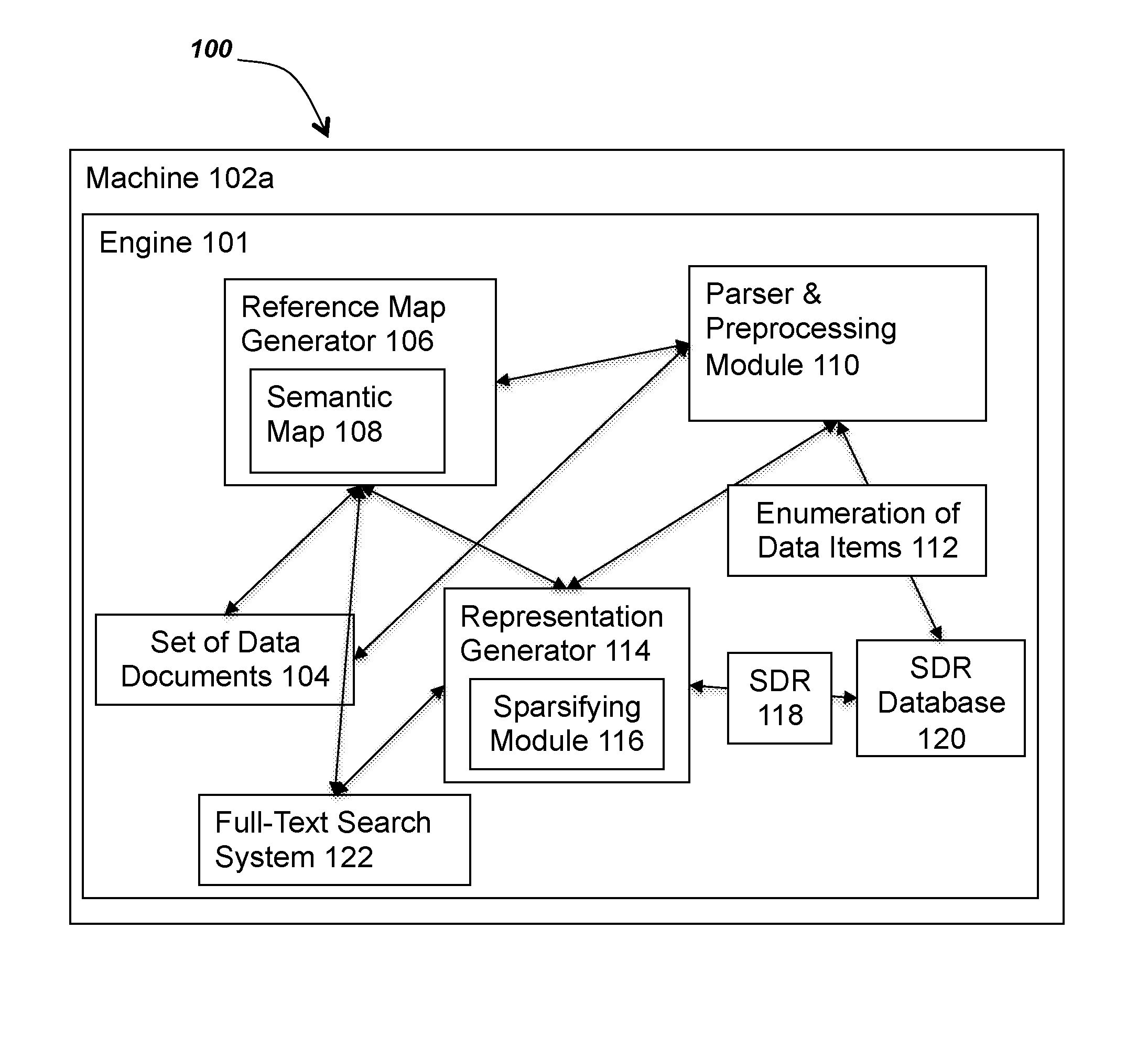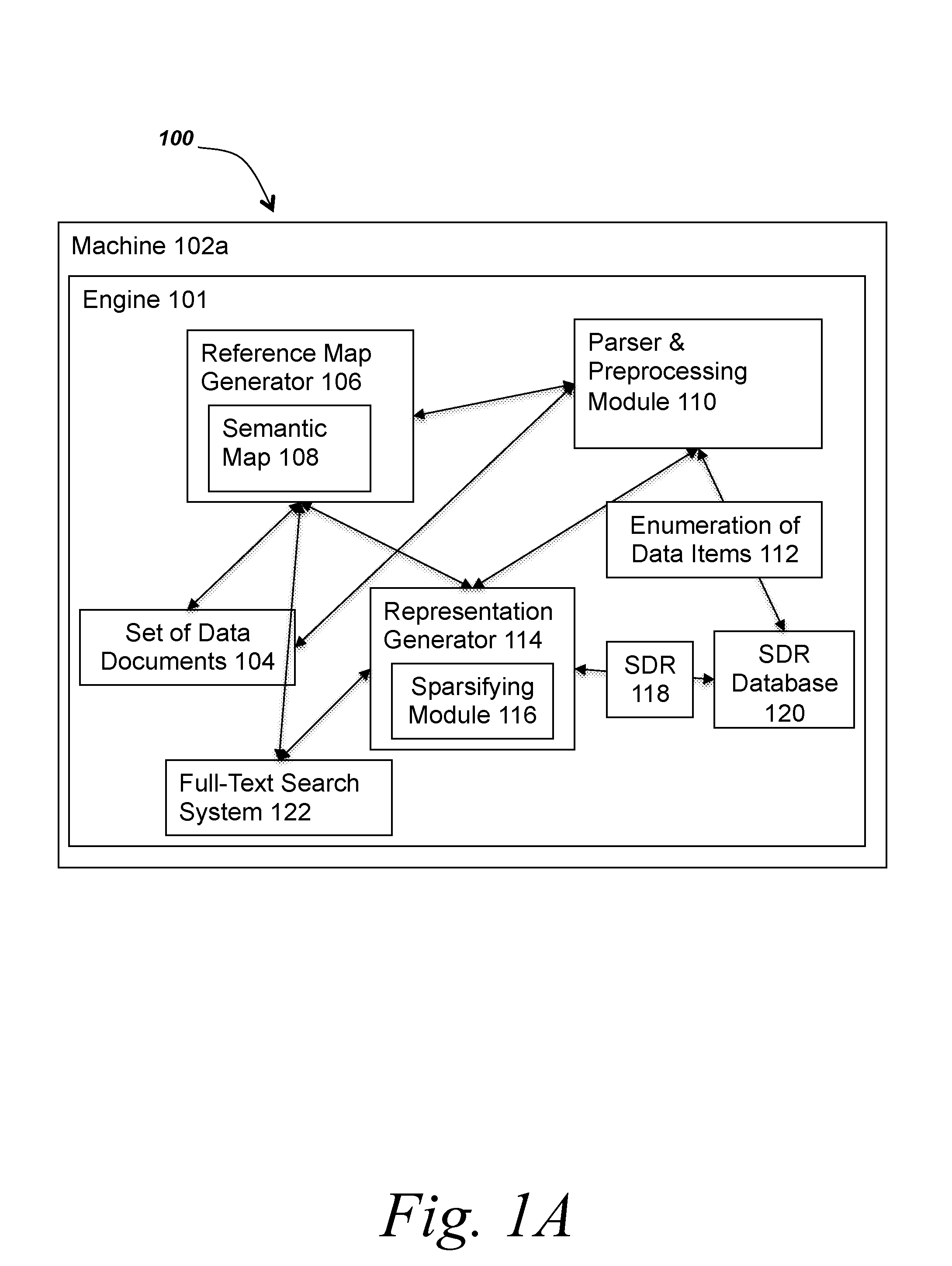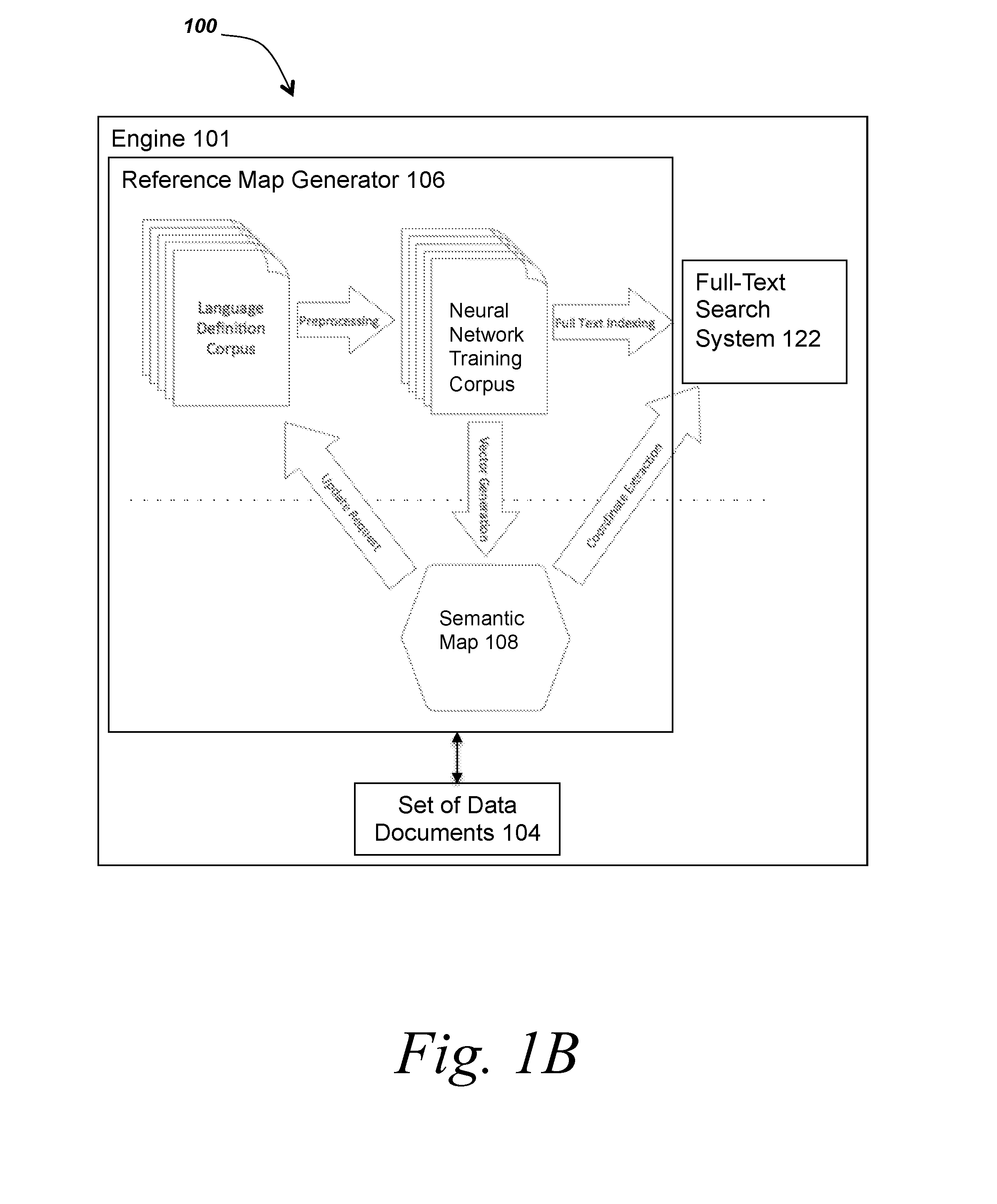Methods and Systems for Identifying a Level of Similarity Between a Filtering Criterion and a Data Item within a Set of Streamed Documents
a filtering criterion and data item technology, applied in the field of generating crosslingual sparse distributed representations, can solve the problems of system inability to provide the functionality of using, and the use of self-organizing maps is typically limited
- Summary
- Abstract
- Description
- Claims
- Application Information
AI Technical Summary
Benefits of technology
Problems solved by technology
Method used
Image
Examples
Embodiment Construction
[0035]In some embodiments, the methods and systems described herein provide functionality for identifying a level of similarity between a filtering criterion and a data item within a set of streamed documents, based upon determined distances between sparse distributed representations (SDRs).
[0036]Referring now to FIG. 1A, a block diagram depicts one embodiment of a system for mapping data items to sparse distributed representation. In brief overview, the system 100 includes an engine 101, a machine 102a, a set of data documents 104, a reference map generator 106, a semantic map 108, a parser and preprocessing module 110, an enumeration of data items 112, a representation generator 114, a sparsifying module 116, one or more sparse distributed representations (SDRs) 118, a sparse distributed representation (SDR) database 120, and a full-text search system 122. In some embodiments, the engine 101 refers to all of the components and functionality described in connection with FIGS. 1A-1C...
PUM
 Login to View More
Login to View More Abstract
Description
Claims
Application Information
 Login to View More
Login to View More - R&D
- Intellectual Property
- Life Sciences
- Materials
- Tech Scout
- Unparalleled Data Quality
- Higher Quality Content
- 60% Fewer Hallucinations
Browse by: Latest US Patents, China's latest patents, Technical Efficacy Thesaurus, Application Domain, Technology Topic, Popular Technical Reports.
© 2025 PatSnap. All rights reserved.Legal|Privacy policy|Modern Slavery Act Transparency Statement|Sitemap|About US| Contact US: help@patsnap.com



